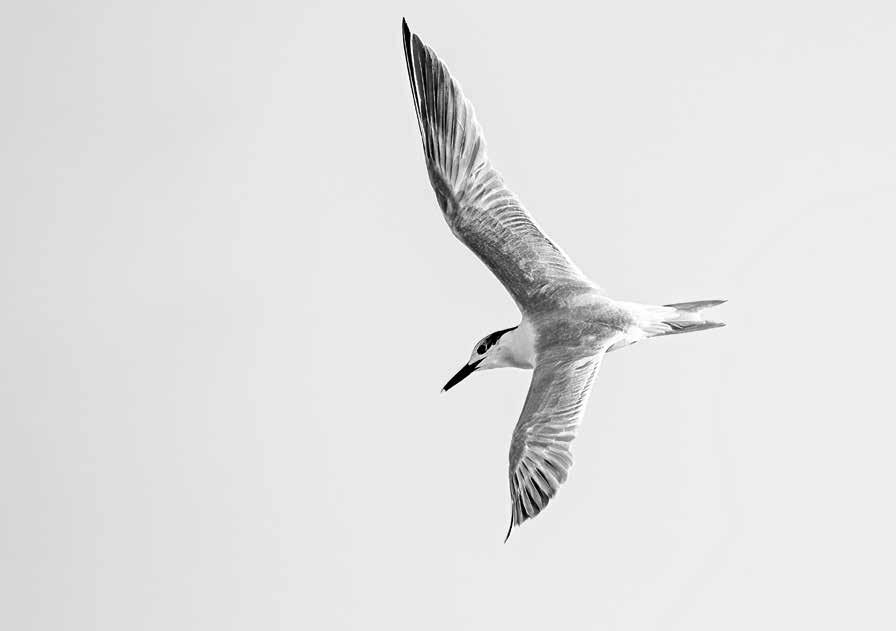
2 minute read
SANDWICH TERNS DIVING TO BEAT THE BAND
Sandwich terns will also face into the wind, and sometimes hover. And it’s pretty easy to track them to that point with a long lens. But then they will just drop out of the frame, faster than you, or at least I, can follow. They don’t give any warning, as far as I can tell, they just fall. Sometimes you might catch them rising up out of the water again, but mostly they just lose you. Or at least me.
After a while I gave up with the camera and decided to just watch to better understand the dynamics of their dives.
I counted a total of nine of them at one point, all working the same area. They seemed to pay no attention to one another, flying on different vectors, switching zones, shifting around in the air like a poorly organized soccer team. Sometimes one would give a call that sounded similar to a smoke alarm with a low battery.
Occasionally one would dive, hit the water, splash, then rise up, I hoped with a fish in their bill. More often than not, though, they would start a dive, then break off part way and abandon it, circling around for a second as if they had something better to do.
The thing that got me about their dives when they did make them was how fast they were. While pelicans follow a path similar to the arc of a rainbow, and osprey hit with something close to Superman drama, the Sandwich terns just dove wings out, almost straight down, like a fast-forwarded kamikaze dive. It was lightningfast, deftly efficient, and as visually deceptive as a game of three-card monte.
A trio of brown pelicans worked the same bit of ocean. They seemed to be diving five or 10 times as often as the terns.
I started to wonder why there was such a difference in their rates of diving. Looking it up later, a Sandwich tern, when feeding, tends to dive slightly more than twice a minute. With these birds it seemed more like once every five minutes.
It had been blowing for days, and the water close to shore was pretty cloudy – that inharmonious beige-suspended-in-blue color we get down here. So visibility probably had something to do with it. Possibly it was the fact that the average size of the fish a brown pelican will consume is about two-and-a-half inches – twice the size of the ones Sandwich terns consume.
But I also started to think about their different hunting techniques, as well as the birds’ physical forms. The brown pelican’s methods are pretty similar to fishermen using a seine net. They basically hit the water open mouthed, aiming at whole groups of fish, capturing as much as 20 pints of fish-filled water in their gullet, then slowly draining the water out until they are left with nothing but fish.
Anyone who’s ever witnessed a peregrine falcon maraud into a flock of birds will see that they don’t chase the group as a whole, but instead pick out one individual and aim for it. Sandwich terns, it would seem, need to employ a similar surgical precision, and maybe picking out an an inch-and-a-quarter long fish in cloudy water from 20 feet up was not as easy as it seemed to the casual observer.
While I wondered about all this, the second line started up again, getting louder as they made their way back down the pier, playing what I believe was the same song again, but then switching to something new and a little more up. They kept playing until they made it to the parking lot, where people hugged and talked for a while before they slowly dispersed.
The terns and the pelicans kept feeding, or at least trying to. I watched as the light halved itself, then halved itself again, as the people on the pier turned to silhouettes, then shadows. I was trying to catch that moment when the birds called it a night. I was still watching when I realized they already had.








